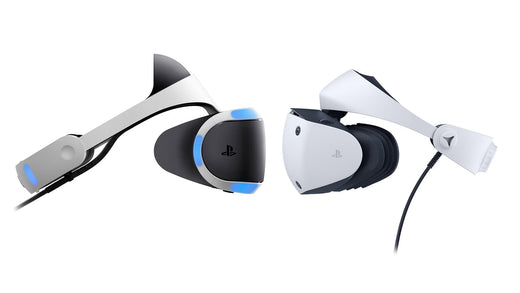The PlayStation VR2 (PS VR2) was the first new VR headset announced this year, 2023 , by Sony, surpassing itself with new features. This allows us to establish the main differences between the first generation of PS VR launched in 2016 and the new generation announced this year, 2023.
Do you want to know the most notable differences?
In this article we highlight their main differences.
Type of PlayStation where you can use it
The first thing you should be concerned about is whether your old headset will work with the latest consoles.
PSVR works with PS4, PS4 Pro, and PS5 as long as you install an adapter. This adapter isn't necessary if you have a PSVR2 headset, as it will work directly with PlayStation 5.
Resolution and visual quality
The PS VR2 offers a much higher resolution than the first-generation PS VR (2000x2040 vs. 960x1080). The high-resolution OLED display provides sharper, more detailed image quality.
Motion sensor
Another major new feature of PS VR 2 is its motion detection system, which allows for a greater range of motion and improved precision. The field of view is approximately 10 degrees larger.
Additionally, PS VR2 features 4 built-in cameras for headset and controller tracking and an IR camera for eye-by-eye tracking.
Better tactile response
The PS VR 2 motion controllers are different from the original model. The new controllers offer improved haptic feedback, more precise tracking, and additional features for a more immersive virtual reality experience.
The helmet, for example, has tactile feedback when it vibrates, a feature that the previous generation helmet does not have.
Weight and size
The weight and size of a helmet is an important feature for the user, as we are talking about comfort, and in many cases, health, since a very uncomfortable and heavy helmet can cause neck and head pain.
In this sense, the PSVR2 is 40g (2.8oz) lighter than the PSVR, which is certainly noticeable during long periods of play.
The use of cable and its connectivity
Unlike the first generation of PS VR, which required multiple cables to connect the headset to the console, PS VR 2 has evolved in this regard, making setup easier and reducing cable clutter.
The PSVR2 comes with a single cable that connects to a USB-C port on the PlayStation 5, plug and play. The cable is 4.5 meters long.
On the other hand, PSVR uses an HDMI port (x2) to the processor unit, USB-A and HDMI to the PS4, HDMI to the TV, and PlayStation Camera to the PS4 (via USB). And while the final result is of the same quality, the process is cumbersome to implement.
As for the controllers, both devices are wireless and connect to the console similarly to a standard gamepad.
Conclusion
PlayStation VR2 improves on PlayStation VR in almost every physical and visual aspect, from the headset's weight to its setup comfort. The gameplay experience is also superior, although precisely because of this technological shift, the number of games available for PSVR2 is currently lower compared to its predecessor.

